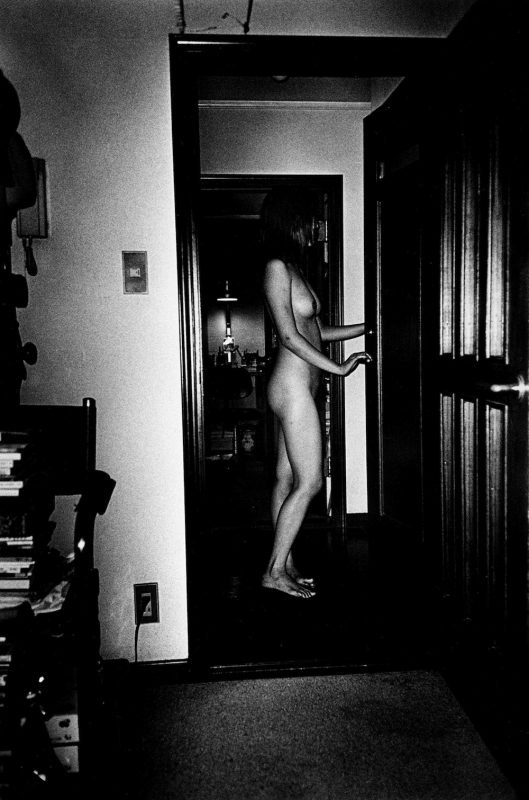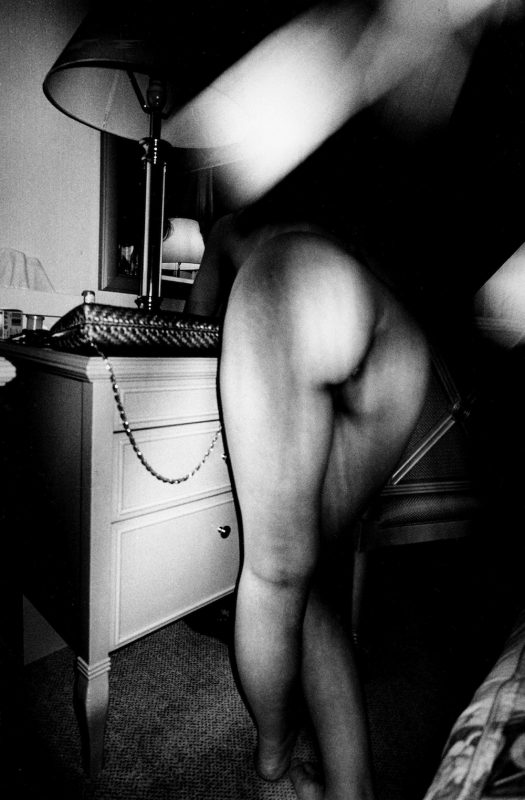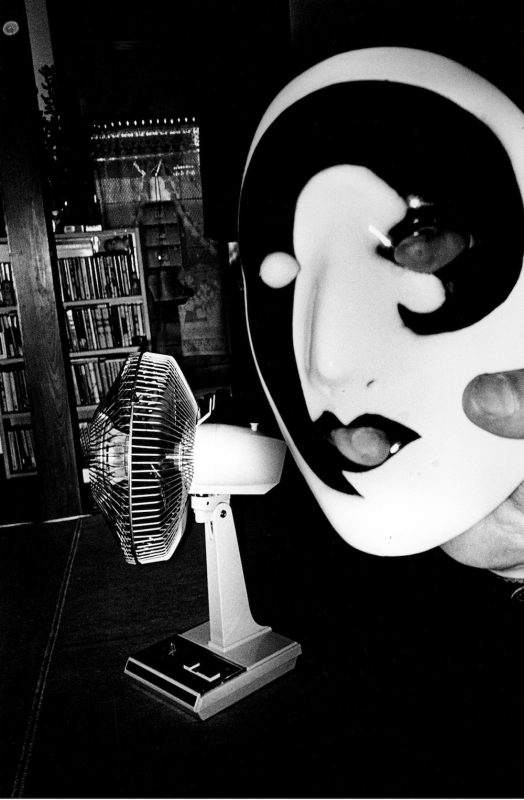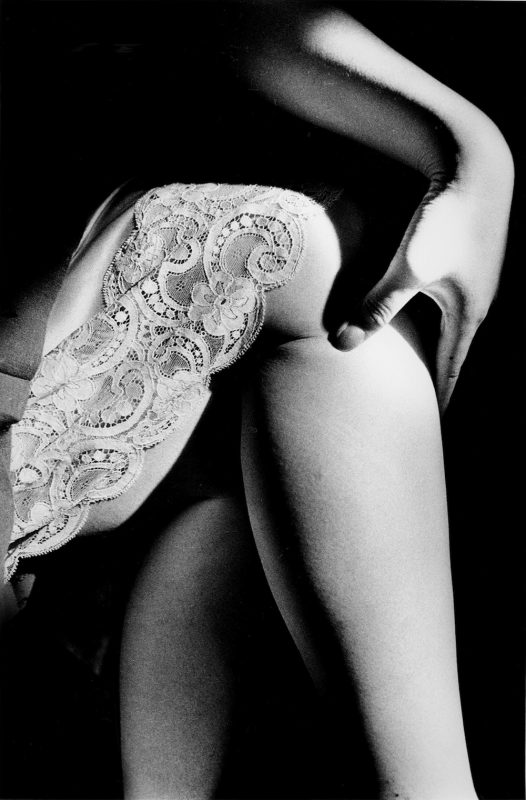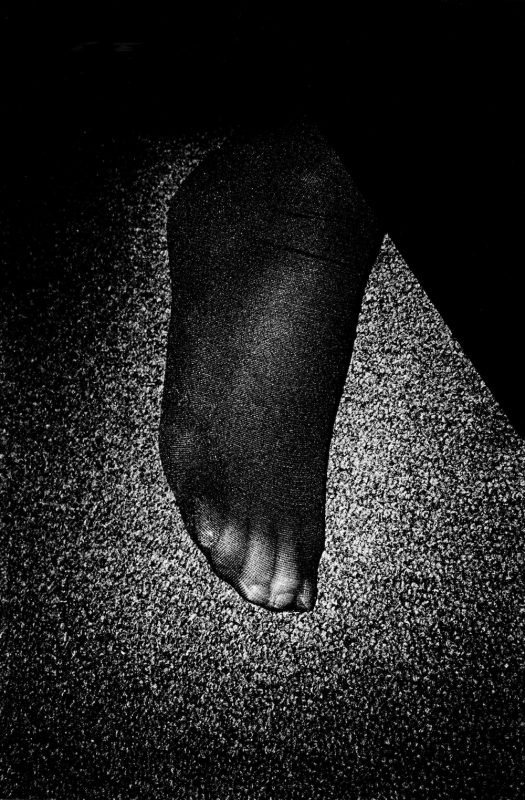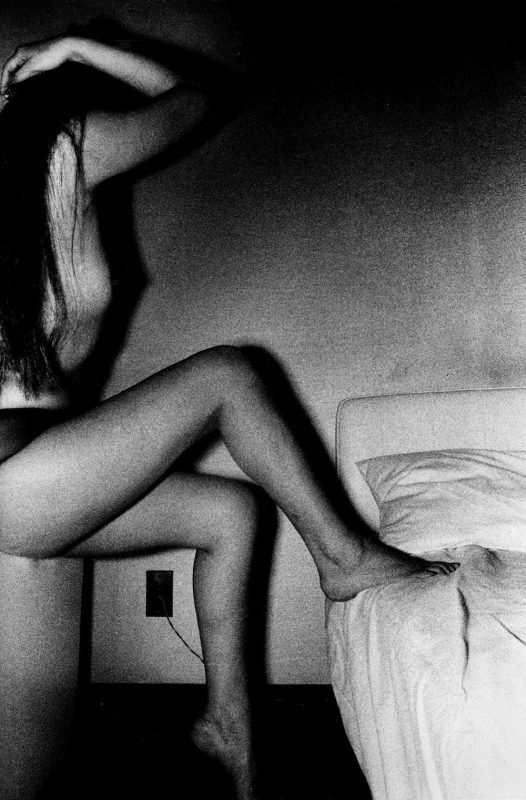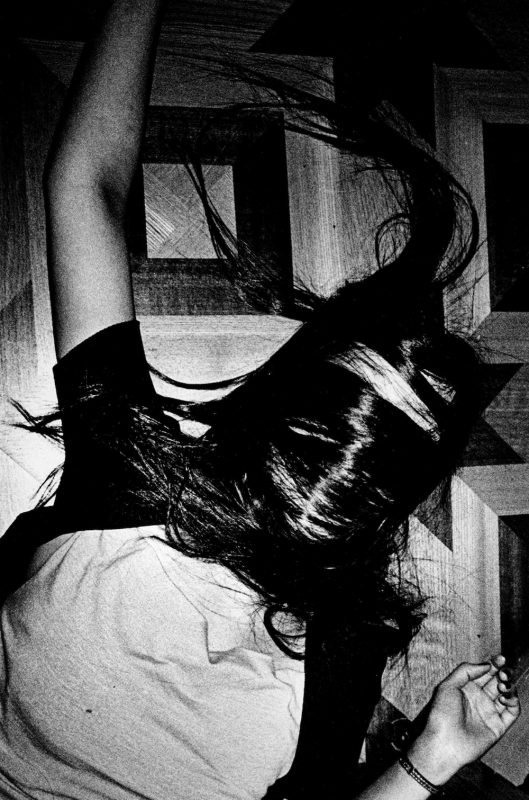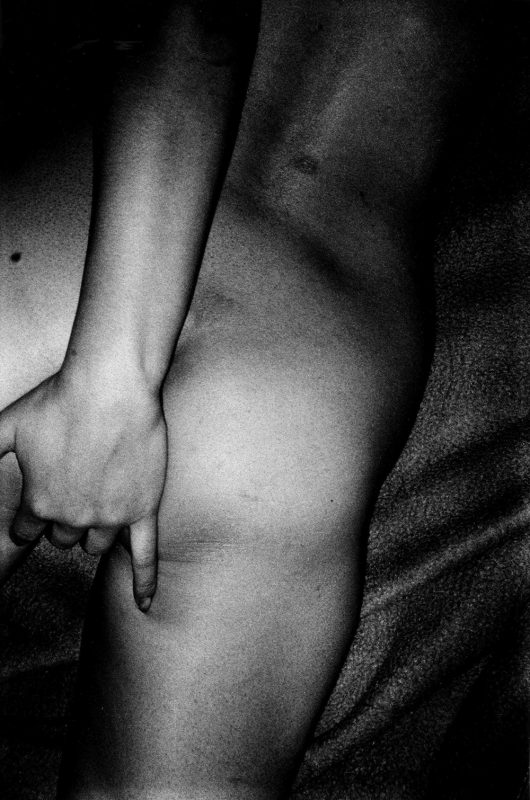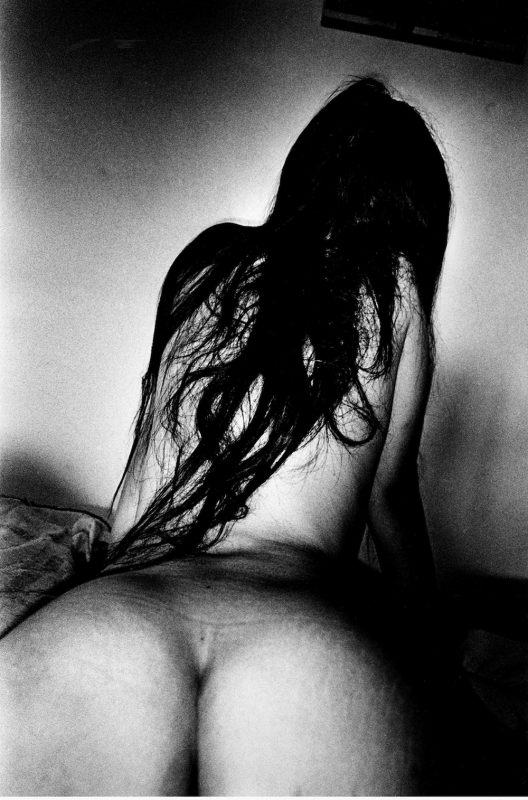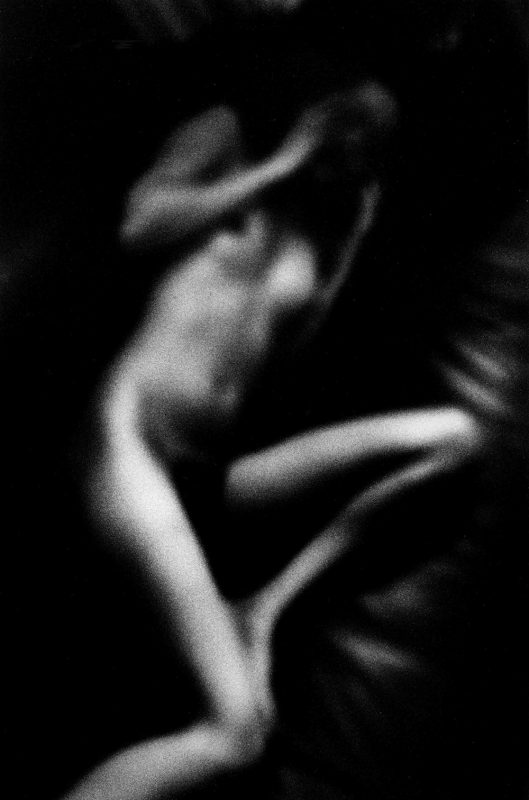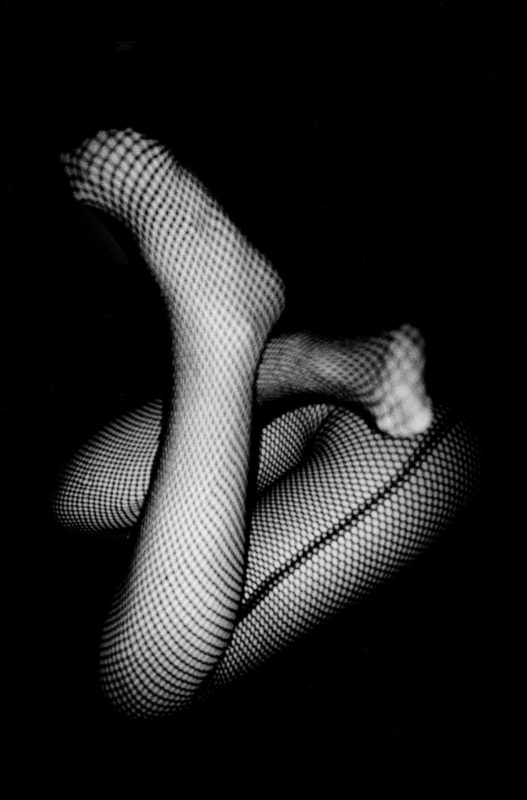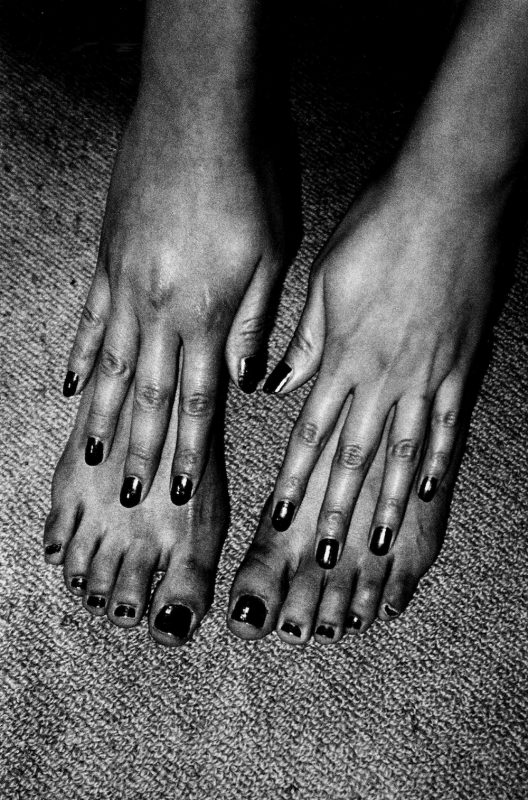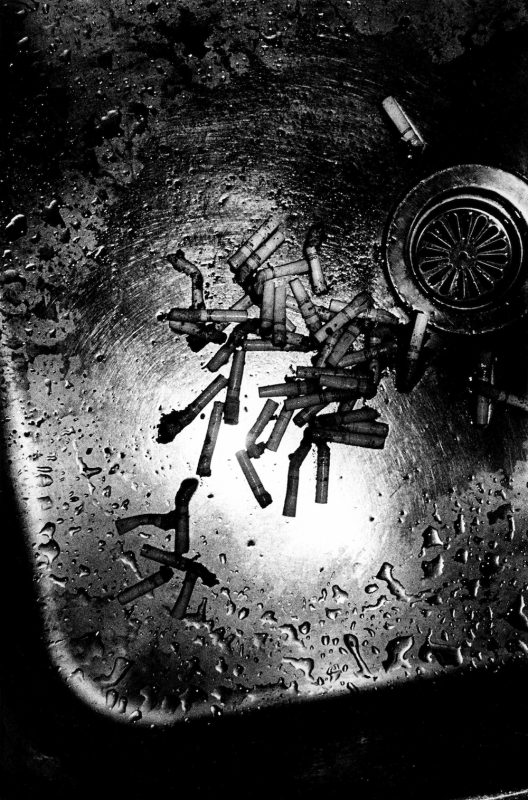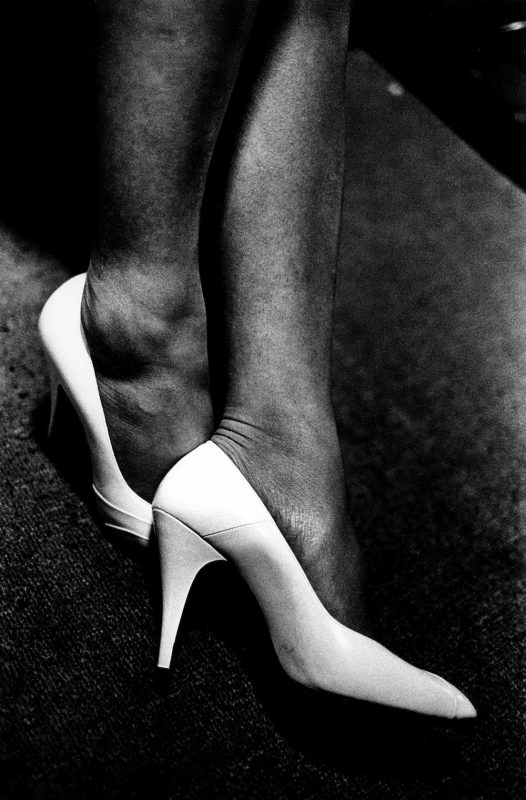Daido Moriyama
a room
Essay by Jean-Kenta Gauthier
Renown for his urgent, blurry photographs of street scenes, experimental approaches to printed matter and vast dissemination of images, Daido Moriyama has in effect been working on a room in his own apartment since the 1970s. These intimate, black and white photographs, with their strong erotic undertones, offer a glimpse into Moriyama’s daily life. Mixing depictions of female nudes — often pictured from angles in which the models’ faces are kept obscured — with shots of banal and ordinary domestic situations, this works suggests a voyeuristic approach in which the artist is simultaneously a participant and observer of his own intimate, private documentary. Asserting both a sense of control over the actions and containment in its rendering, a room represents the diary of an artist, now aged 77, who for over five decades has harnessed photography’s power to revive memories like no other.
On February 14-15, 2015, Daido Moriyama held a ‘printing show’ performance in Akio Nagasawa gallery in Tokyo, using the entire selection of 67 photographs included in a room. The event, during which 600 unique copies of a book of the same name were produced, marked the fourth recreation of Moriyama’s now famous book-making performance since the original underground exhibition from 1974. It was also the first time Moriyama would reorganise such an event in Tokyo, as the three other venues were located in the US (Aperture Foundation, New York 2011), the UK (Tate Modern, London, 2012) and France (Le Bal, Paris, 2013).
‘Printing show’, a term coined by Moriyama, puts the process of creating a photobook at the heart of the event. That week of March 1974, participants were asked to select a fixed number of his images from a grid displayed on a wall, determine their order and then have them printed on location using a photocopy machine before assembling and stapling their own unique copy together. Each would be signed and accompanied by a silkscreen cover and the book, entitled Another Country in New York, ushering in a brand of performance art applied to the creation of a photobook.
Daido Moriyama has confessed to me that his favourite book is Andy Warhol’s catalogue for his exhibition held in 1968 at Modern Museet in Stockholm. Less a traditional museum catalogue, this historical book conveyed Warhol’s aesthetics without heavy use of text. Made of a stream of black and white images with a colourful silkscreen cover showing Warhol’s famous flower motif, this publication shares many similarities, despite its size and pagination, with Moriyama’s 2015’s a room or the aforementioned Another Country in New York.
Daido Moriyama has also made appropriation, a core idea in Warhol’s oeuvre, a key concept in his work. Over the course of a long and prolific career, photographs of posters or television screens, i.e. images of images, have become legion. The work that is the most representative of this principle is probably Accident, a volume of 12 series published each month throughout 1969 in the Japanese magazine Asahi Camera. Each series, wonderfully titled Premeditated or not, consists of photographing magazine pages or television screens ranging from incidents such as car crashes to murder cases, and other instances of violence, unrest and depravation. The premise of a ‘printing show’ naturally extends the appropriation principle further by enabling not only the artist but the public to make Moriyama’s images their own. It closes the gap between author and audience, message and medium. One could also add that, as is the case with a room, Moriyama has reached his utmost level of de-appropriation by letting the participants appropriate and edit what can be considered as the artist’s most intense images of highly personal memories.
During his 2011 printing show at Aperture Foundation, one particular participant chose to repeat the same image throughout her copy, which was a surprise to Daido Moriyama who smiled wryly when he discovered the singular sequence. By transmitting images, the ‘printing show’ fits into the wider discussion on the nature of visual communication. Moriyama, himself, has said the following on the matter: “When I sign each book, I open the book and look at the image on the first page, and I think ‘aah… this person chose this image!’ I kind of see the person’s character and taste. I find it very interesting. To tell the truth, I would like to see every page of what everyone has selected. For example, even without seeing the person’s face or their daily life and work, I think there is a moment of communication with them through photography.”
Often referring to the idea of a photograph being a “fossil of light and time” that is updated or reanimated every time it is seen by a viewer, Moriyama has focused his attention on the moment when one of his single memories potentially encounter those belonging to the viewer. In this sense, his ‘printing shows’, given that they let the viewers recontextualise Moriyama’s memories in the most tangible way, ultimately consist in a form of confrontation with memories. They represent the most advanced formula of the artist’s intention, of which a room is the latest and most generous manifestation. Moriyama says it best: “A single photograph contains different images.” ♦
All images courtesy of the artist, Akio Nagasawa Gallery and Jean-Kenta Gauthier. © Daido Moriyama Foundation.
—
Jean-Kenta Gauthier is the founder of a Paris-based contemporary art gallery. He has also partnered with Clément Kauter and Akio Nagasawa on Circulation, a new laboratory space dedicated to artists’ books, opening on 13 November with an inaugural show of Daisuke Yokota’s new work entitled Inversion.

